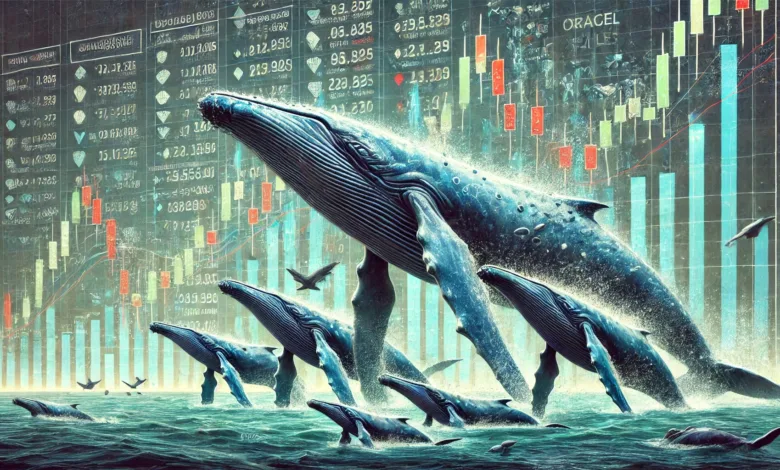
Recent on-chain data has revealed that Dogecoin whales have executed several significant transactions in the past 24 hours. These activities, characterized by large volumes, have captured the attention of crypto enthusiasts and analysts alike. Let’s delve into the latest movements and their potential implications for Dogecoin’s market dynamics.
Exploring the Movement of Dogecoin Whales: Transfers to and from Exchanges
According to Whale Alert, a reputable cryptocurrency transaction tracking service, the Dogecoin blockchain has witnessed a series of substantial transfers over the last day. These movements are typically linked to whales—entities that hold vast amounts of cryptocurrency on the network. The magnitude of their holdings grants them considerable influence, making their activities worth monitoring closely for market insights.
The significance of whale transactions lies in their potential to reflect broader market sentiment. While not every transaction directly impacts prices, they often provide valuable clues into the mindset of large investors. The intent behind a whale’s transfer can vary greatly, and although it’s challenging to ascertain their motives with certainty, transaction details sometimes offer subtle hints.
Unveiling the Latest Whale Transactions on the Dogecoin Network
In the past 24 hours, six notable whale transactions have occurred on the Dogecoin network. Among these, one involved a transfer between two unidentified wallets. These addresses, not linked to any recognizable centralized platform, are likely self-custodial wallets owned by individual investors. Due to the anonymous nature of blockchain technology, analyzing such transfers is difficult.
The remaining five transactions, however, exhibit a distinct characteristic: each involves a wallet connected to a cryptocurrency exchange. Below are the specifics of these significant DOGE transactions:
A Closer Look at Exchange Inflows
One of the standout transactions involved a whale transferring approximately $72.5 million worth of Dogecoin from an unknown address to a wallet on Coinbase. This direction of movement is classified as an exchange inflow, indicating a transfer of assets into the custody of a centralized exchange.
Two other transactions were also exchange inflows, involving transfers to Binance ($14.6 million) and Robinhood ($14.2 million). Collectively, these inflows amount to a substantial $101.3 million shifted to exchanges. Investors typically move their assets to exchanges when they intend to utilize services such as selling or trading.
Examining Exchange Outflows
The other two transactions were exchange outflows, representing the opposite direction of asset movement. In one instance, Robinhood experienced a withdrawal of $30.1 million, while Binance saw an outflow of $56.4 million worth of Dogecoin. Exchange outflows often indicate a desire to move assets into self-custody, which is viewed as a bullish signal, reflecting a long-term holding strategy.
Overall, while DOGE whales deposited $101.3 million to exchanges, they concurrently withdrew $86.5 million. This simultaneous action may help mitigate any potential bearish impact arising from selling activities.
Dogecoin Price Analysis
At the time of writing, Dogecoin is trading at approximately $0.29, marking an impressive increase of over 21% in the last 24 hours. The asset’s price surge over recent days has sparked excitement among investors and traders alike, highlighting the dynamic nature of the cryptocurrency market.
With the ongoing activities of Dogecoin whales and market fluctuations, staying informed and vigilant is crucial for anyone involved in the crypto space. As these large investors continue to make strategic moves, their actions will likely remain a topic of keen interest and analysis.







